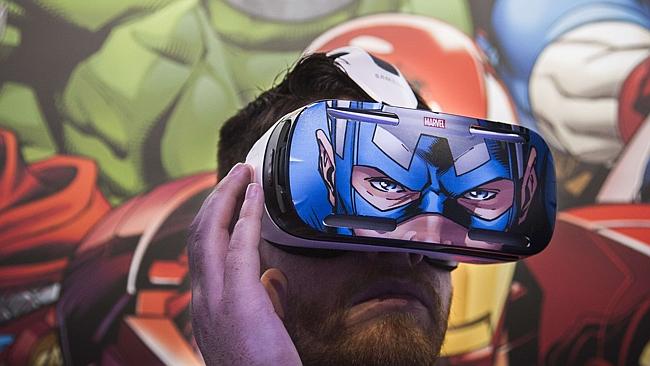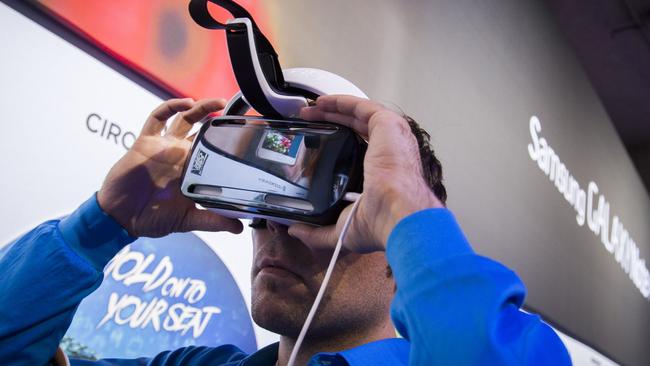Samsung and LG release virtual reality headsets for use with your smartphone
VIRTUAL reality is coming to mobile phones, thanks to the first two commercially available VR headsets from rival phone companies Samsung and LG.

SMARTPHONES are regularly accused of distracting their owners but the next innovation may be the ultimate distraction.
Virtual reality is coming to mobile phones, thanks to the first two commercially available VR headsets from rival phone companies Samsung and LG.
Both use a smartphone to deliver immersive 360-degree gaming and videos, and both will create a new form of mobile entertainment.
WAR: Samsung, Sony and Asus in smartwatch battle at IFA
GADGETS: New curved screen phone to rival Apple’s dominance
But what is virtual reality and how will people really use it?
The term was coined in the 1980s by computer scientist Jaron Lanier but the concept behind virtual reality stretches back to the panoramic art of the 1860s.
The concept is simple: virtual reality immerses its subjects in an artificial, computer-simulated environment and allows them to explore and interact with the different world.
In the case of the Samsung Gear VR and LG VRTX One headset, users are asked to slip phones into the front of a headset, and fix the device over their eyes to experience the 360-degree entertainment.

Users can physically move their heads to see different parts of the artificial environment or, in the case of a video game, target different items.
Samsung Australia chief marketing officer Arno Lenior said the Gear VR headset, to be released in the country later this year, will introduce virtual reality to a mass audience for the time.
“This is the first virtual reality product in an accessible format,” he said.
“It will take games to a whole new level as well as entertainment, whether you want to sit in the Sydney Opera House and see an orchestral performance or play a game.”
Mr Lenior said the company had been working with Oculus for some time to produce the Gear VR headset, which will sell for $249 in Australia.
The Gear VR headset must be used in conjunction with the Samsung Galaxy Note 4, however.

LG’s competing device, the VRTX One headset, created by 3D Systems, Vortex VR and GameFace Labs, uses LG’s G3 smartphone, is created using 3D printing, and costs $US99.
Previously, the main proponent of virtual reality had been Oculus, a company bought by Facebook for $US2 billion, and its Rift gaming headset.
The Rift is still not available for sale to consumers, though a developer version of the headset costs $US350.
Other attempts to deliver virtual reality to consumers include Google Cardboard, unveiled in June, though its results are not as sophisticated.
The influx of virtual reality technology may have implications outside entertainment, too.
Mr Lenior said Samsung’s Gear VR could be used for training in corporate environments, for scientific work in medical settings, and even in education.
“You could have a geography lesson where students can walk through Kakadu National Park,” he said. “Potentially, it could be used in long-distance learning.”
Oculus chief technology officer John Carmack said the mobile virtual reality headset was a “landmark first step” in the field, with more advancements in image processing and VR games to come.
“We’re continuing to make improvements as we go along,” he said.



